Powerviolence and grindcore are two sub-genres of extreme music that have gained popularity in the underground music scene. They both share a similar aggressive sound, but they have their own distinct characteristics. While some may use the terms interchangeably, there are significant differences between powerviolence and grindcore that set them apart. In this article, we will explore the defining features of each genre and discuss their origins, influences, and evolution.
Table of Contents
Defining Extreme Music Genres
To truly grasp the nuances between powerviolence and grindcore, it’s important to delve into the depths of extreme music. Extreme music, a vast umbrella term, encompasses a wide range of sub-genres within heavy metal and punk rock. These sub-genres share common traits such as aggressive sound, high tempo, and unconventional song structures.
On the other hand, grindcore emerged in the late 1980s as a fusion of extreme metal and hardcore punk. It draws influences from genres like death metal, crust punk, and industrial music. Grindcore is known for its relentless intensity, chaotic song structures, and guttural vocal styles that often touch upon sociopolitical themes.
While powerviolence and grindcore share the extreme nature of punk and metal, their distinct origins and influences give them their own sonic identities. Understanding these differences adds depth and appreciation to the diverse world of extreme music.[3]

Purpose of the Comparison
So why do we compare powerviolence and grindcore when they are both extreme music genres? Well, aside from the fact that they both fall under the umbrella of extreme music, comparing them helps dispel any misconceptions and misunderstandings that may arise from using the terms interchangeably. Many people tend to mistake one for the other due to their similar elements, but in reality, they have distinct characteristics that set them apart.
By diving into the defining features of powerviolence and grindcore, we can gain a better understanding of these genres and truly appreciate them for their unique contributions to the extreme music landscape. Powerviolence, characterized by its aggressive and fast-paced sound, often incorporates elements of hardcore punk and thrash metal, while grindcore, known for its relentless speed and chaotic nature, draws influences from punk, hardcore, and death metal. Exploring their musical intricacies and sub-genres within them unravels a fascinating journey through the evolution of extreme music.
Furthermore, comparing powerviolence and grindcore allows us to delve deeper into the evolution of extreme music as a whole. These sub-genres have undergone significant changes and transformations over the years, giving rise to various offshoots and sub-sub-genres. By tracing their history and influences, we can witness how these genres have evolved and continue to shape and influence the extreme music scene today.
In essence, the comparison of powerviolence and grindcore not only helps us differentiate between them but also provides us with a comprehensive understanding of their unique qualities and their impact on the overall extreme music landscape. It allows us to appreciate the depth and complexity of these genres and acknowledge their significant contributions to the evolution of extreme music.[3]
Powerviolence: A Closer Look
Origins and Evolution of Powerviolence
As mentioned earlier, powerviolence emerged in the 1980s from the hardcore punk scene. It was a reaction to the increasing commercialization of punk rock and aimed to bring back the rawness and intensity of early hardcore punk.
The term “powerviolence” itself was coined by members of Infest, a pioneering powerviolence band from California, in the late 1980s. They described their sound as “powerful, raging hardcore” and thus, powerviolence was born.
Powerviolence quickly gained popularity in the underground music scene, with bands like Crossed Out, Man is the Bastard, and Spazz leading the way. These bands incorporated elements of thrash metal and grindcore, creating a unique and aggressive sound that would come to define powerviolence.
Over the years, powerviolence has evolved and branched out into various sub-genres such as “fastcore” (faster and more intense than traditional powerviolence) and “sludgecore” (slower and heavier with elements of doom metal). These offshoots continue to push the boundaries of powerviolence and add a new dimension to its already diverse sound.[1]
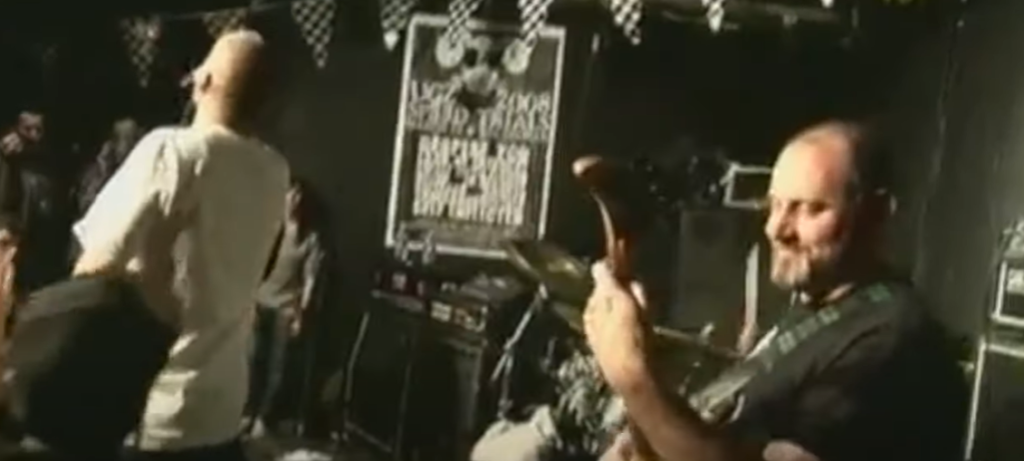
Musical Characteristics of Powerviolence
Powerviolence is characterized by its short and intense bursts of aggression, typically lasting no longer than a minute. The songs are often fast-paced with heavy, distorted guitars, frantic drumming, and aggressive vocals. The lyrics tend to be politically charged and confrontational, reflecting the genre’s punk roots.
Another defining feature of powerviolence is its DIY (do-it-yourself) attitude towards production. Most bands within this genre choose to record and distribute their music independently, without relying on mainstream record labels. This allows them to maintain their creative freedom and stay true to the raw and unpolished sound that defines powerviolence.[1]
Influential Powerviolence Bands
During the 1980s and 1990s, the powerviolence scene saw the emergence of several influential bands that left a lasting impact. Bands like Infest, Crossed Out, Spazz, Man is the Bastard, and Capitalist Casualties pushed the boundaries of the genre, blending elements of hardcore punk, grindcore, and noise into their ferocious sound. Their raw aggression and relentless energy captivated audiences, making them pioneers of the powerviolence movement.
Fast forward to today, and powerviolence continues to thrive with a new generation of bands carrying on the legacy. Weekend Nachos, ACxDC (Antichrist Demoncore), and Nails are just a few examples of bands that have risen to prominence, infusing the genre with their own unique styles and pushing the boundaries even further. With their explosive performances and unapologetic approach, these bands are keeping the spirit of powerviolence alive and well, ensuring its enduring presence in the underground music scene.[1]
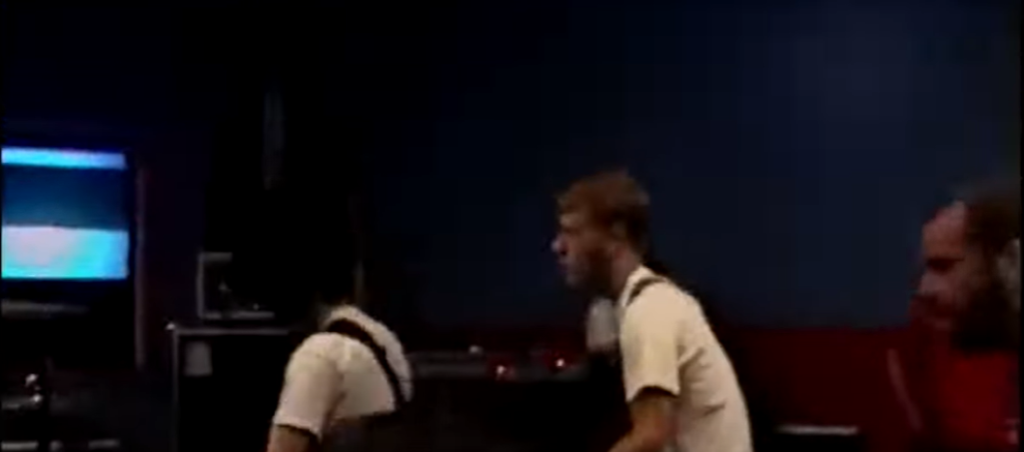
Grindcore: A Detailed Examination
The Birth and Growth of Grindcore
Like powerviolence, grindcore also emerged in the 1980s from the punk and hardcore scenes, specifically in the UK. It was a fusion of punk, hardcore, and death metal, with bands like Napalm Death, Repulsion, and Carcass leading the way.
The term “grindcore” is derived from “grind,” a sub-genre of heavy metal characterized by its fast and aggressive sound. Bands like Napalm Death were inspired by the intensity of these grind bands and incorporated it into their own music, thus giving rise to grindcore.
In the early years, grindcore was primarily associated with death metal due to its extreme and brutal nature. However, as the genre evolved, it began to incorporate more elements from hardcore punk, giving it its unique identity.
Grindcore, with its furious tempo, chaotic song structures, and abrasive vocals, became a platform for expressing social and political discontent. Its relentless energy and aggressive nature served as a reflection of the societal unrest and dissatisfaction prevalent during that time.
As grindcore continued to evolve, it branched out and diversified, giving rise to various sub-genres such as goregrind, crustgrind, and cybergrind. Each sub-genre brought its own unique characteristics and influences, further expanding the boundaries of grindcore.
Today, grindcore stands as a powerful and influential force in the underground music scene, continuing to push boundaries and challenge traditional notions of heavy music. Its raw intensity and uncompromising attitude make it a favorite among fans of extreme music, while its DIY ethos and grassroots origins keep it firmly rooted in the punk and hardcore ethos from which it emerged.[2]
Musical Features and Subgenres of Grindcore
Grindcore is typically characterized by its rapid-fire drumming, heavily distorted guitars, and guttural growling or shrieking vocals. The songs are usually short and chaotic, with lyrics that touch upon a variety of topics such as politics, social issues, and personal struggles.
One of the defining features of grindcore is its use of blast beats, where the drummer plays rapid, consecutive beats on the snare and kick drums. This creates a frenzied and intense sound that has become synonymous with grindcore.
As mentioned earlier, grindcore has given rise to various sub-genres, each with its own unique characteristics. Goregrind, for example, incorporates elements of horror and gore into their lyrics and performances. Crustgrind, on the other hand, combines elements of crust punk with grindcore, resulting in a more raw and aggressive sound.[2]

Iconic Grindcore Acts
Since its inception, grindcore has been home to several influential and groundbreaking bands. Napalm Death, Carcass, and Terrorizer are considered pioneers of the genre, having established its sound and style in the early years.
Other notable acts include Pig Destroyer, Agoraphobic Nosebleed, and Brutal Truth, who have all helped shape the genre into what it is today. These bands continue to push the boundaries and experiment with different elements, keeping grindcore fresh and relevant.[2]
Comparing the Key Differences
Tempo and Song Structure
One of the main differences between powerviolence and grindcore lies in their distinct approaches to tempo and song structure. Powerviolence, characterized by its aggressive and intense nature, embraces a wide range of tempos that frequently shift within a single song. This dynamic variation adds depth and complexity to the music, creating a unique listening experience. On the other hand, grindcore maintains a relentless and consistent high-speed tempo throughout most of its songs, creating a relentless barrage of sound that captivates listeners.
These differences in tempo and song structure contribute to the unique identities of powerviolence and grindcore, making them distinct and influential genres within the realm of extreme music.[3]
Lyrics and Themes
Another key difference between powerviolence and grindcore lies in their lyrics and themes. While both genres touch upon similar topics such as social issues and personal struggles, they approach them from different perspectives.
Powerviolence tends to focus more on personal experiences and emotions, with lyrics that are often introspective and reflective. The genre emphasizes individual expression and empowerment, encouraging listeners to find their own voice and stand up for what they believe in.
Grindcore, on the other hand, takes a more outward approach, using its aggressive nature to channel societal and political frustrations. Its lyrics often convey a sense of anger and rebellion against injustice and oppression. Grindcore bands are not afraid to address controversial topics and challenge societal norms, making it a powerful platform for social commentary.[3]
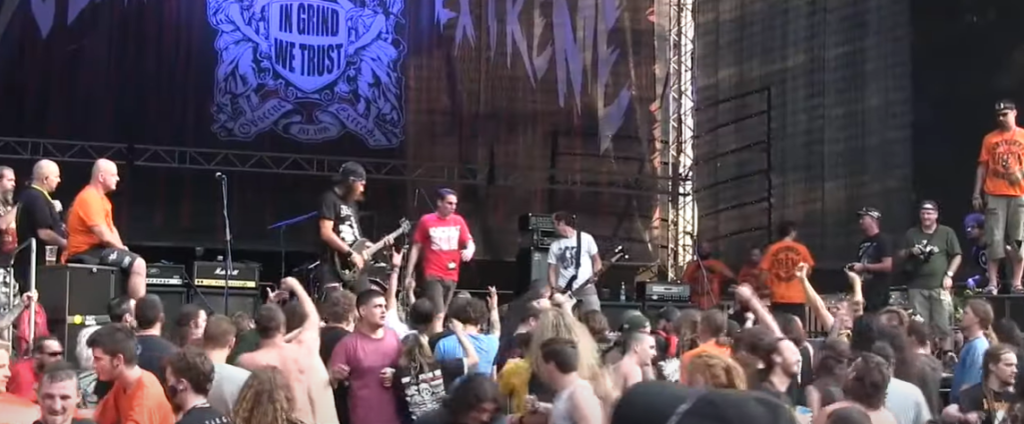
Cultural and Regional Aspects
Both powerviolence and grindcore share strong roots in the DIY culture, where bands often take charge of their own music production and distribution. However, powerviolence embraces a more pronounced underground punk ethos, while grindcore draws influences from both metal and hardcore, creating a unique sonic fusion.
Moreover, grindcore has garnered a significant following in regions like Japan and Brazil, where it has organically evolved to incorporate elements of local culture and music. This cultural infusion has given rise to distinctive sub-genres such as Japanese grindcore and Brazilian grindcore, each possessing its own distinct sound and identity. These sub-genres thrive on intricate rhythms, blistering speed, and an unrelenting intensity that captures the essence of their respective cultures.
The dynamic evolution of grindcore within these regions highlights the genre’s adaptability and its ability to reflect and incorporate local musical influences. It showcases the power of music to transcend boundaries and create a global community of passionate fans who appreciate the raw energy and unconventional beauty of this extreme music genre.[3]
FAQ
What is grindcore vs powerviolence reddit?
Reddit, a popular online forum platform, has dedicated communities for both grindcore and powerviolence music. These subreddits serve as spaces for fans to discuss and share their love for these genres, discover new bands, and engage in discussions related to the scene. They also provide a platform for artists to promote their music and connect with their audience.
What is the difference between grindcore and death grind?
Death grind is a sub-genre of grindcore that incorporates elements of death metal, creating a more brutal and intense sound. It is distinguished by its use of guttural vocals, downtuned guitars, and blast beats, incorporating the best of both worlds from death metal and grindcore. While there may be similarities between the two genres, they each have their own distinct sound and style.
Is grindcore more metal or punk?
Grindcore can be considered a fusion of both metal and punk. It draws influences from the aggressive and fast-paced nature of hardcore punk, while also incorporating elements of extreme metal such as blast beats, distorted guitars, and guttural growls. However, the genre’s roots lie in punk rock, making it an integral part of the DIY music scene. Ultimately, grindcore is its own unique genre that defies traditional categorization.
Is Doom a grindcore?
Doom is a sub-genre of metal that incorporates elements of thrash, death metal, and hardcore punk. It is characterized by its slow, heavy sound and dark themes. While there may be some overlap in terms of musical elements, doom and grindcore are distinct genres with their own unique characteristics, making them easily distinguishable from each other.
Is dying fetus grindcore?
Dying Fetus is a death metal band, not grindcore. While they may incorporate elements of grindcore in their music, they are primarily known for their technical and brutal death metal style. However, the line between death metal and grindcore can often be blurry, with bands crossing over into both genres. In the end, it is up to individual interpretation and preference. Overall, grindcore and powerviolence may share some similarities in their aggressive nature and DIY ethos, but they each have their own distinct sound, themes, and cultural influences. As extreme music genres, they defy traditional categorization and continue to evolve and push the boundaries of musical expression.
Is Siege a grindcore?
Siege is often considered one of the pioneers of powerviolence, a genre that emerged from the earlier grindcore scene. While their music may have some similarities to grindcore, it is primarily characterized by its short and aggressive bursts of energy and hardcore punk influences. Therefore, Siege can be seen as a precursor to powerviolence rather than a pure grindcore band. The blending and evolution of these extreme music genres only contribute to the richness and diversity of the underground music scene, welcoming new ideas and experimentation with open arms. So whether you’re a fan of grindcore or powerviolence (or both), remember to keep an open mind and embrace the constant evolution of this dynamic musical landscape.
Is Doom Slayer unbeatable?
As a character in the popular video game series “Doom”, Doom Slayer is often seen as an unstoppable force, able to take on hordes of demons with ease. However, in reality, he is just a fictional character and can be beaten by skilled players or even other powerful characters from different video games. So while Doom Slayer may seem unbeatable within his own universe, in the grand scheme of things, he is not invincible. In the same way, grindcore and powerviolence may be seen as powerful and unstoppable genres by their fans, but they are still part of a larger musical landscape with its own diverse and constantly evolving elements.
Useful Video: Metalcore VS Grindcore VS Deathcore (Guitar Riffs Battle)
Conclusion
In conclusion, while grindcore and powerviolence may have their own distinct qualities, they are both part of the larger underground music scene that embraces diversity and experimentation. Their unique blend of aggression, speed, and raw energy has captured the hearts of fans all over the world, creating a global community of like-minded individuals who appreciate extreme music in all its forms. So whether you’re a fan of grindcore, powerviolence, or any other extreme music genre, keep an open mind and continue to support the growth and evolution of these dynamic musical styles. And who knows, maybe one day we’ll see the birth of a new sub-genre that combines elements from both grindcore and powerviolence – only time will tell. Until then, keep rocking and stay true to the underground. Thank you for reading and supporting these incredible genres that continue to push the boundaries of musical expression. Rock on!
References:
- https://diyconspiracy.net/terms/powerviolence/
- https://bobspodcasts2017.wordpress.com/2017/01/30/powerviolence-or-grindcore/
- https://uniteasia.org/chonburi-powerviolence-maniacs-high-voltage-release-epic-fullset-live-video-thailand/


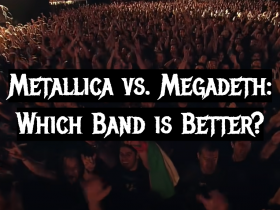
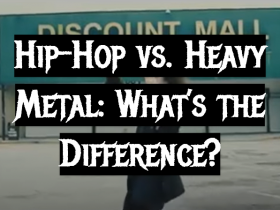
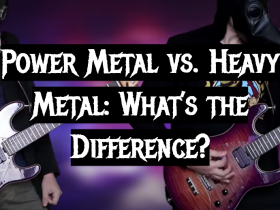
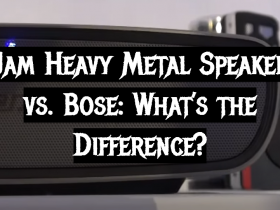
Leave a Reply